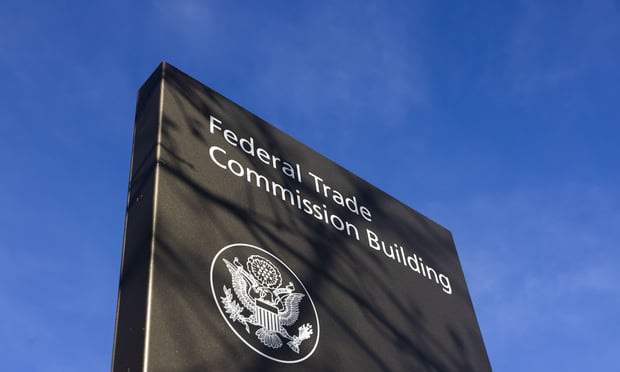 It's no secret that the U.S.Postal Service has struggled for years against such headwinds asprivate-sector competition, digitization and unfunded governmentmandates including six-day-a-week delivery service. But under CFOJoe Corbett, the $67 billion government-owned, commerciallyoperated organization, which won a Gold Alexander Hamilton Awardfor Cash Management in 2009, continues to find new opportunitiesamong the many challenges.
It's no secret that the U.S.Postal Service has struggled for years against such headwinds asprivate-sector competition, digitization and unfunded governmentmandates including six-day-a-week delivery service. But under CFOJoe Corbett, the $67 billion government-owned, commerciallyoperated organization, which won a Gold Alexander Hamilton Awardfor Cash Management in 2009, continues to find new opportunitiesamong the many challenges.
T&R: Despite all the financial changes theUSPS is going through, you managed to create best-in-classinnovations with your AHA award for cash management. Are there moreinnovations to come?
| Corbett: Absolutely. Wewere the first government entity to implement Sarbanes-Oxley. Wecompleted the implementation in our fiscal year ending September2010, and we got a clean opinion from our audit firm, Ernst &Young, in November of last year. It was an enormous task when youthink about it. Everyone bet we weren't going to be able to do it.It's nice to be able to overcome that, because the odds are againstan organization that is decentralized, with 36,000 locations, thelargest retail network in the county and a long, long legacy, soyou have systems built on top of systems.
Corbett: Absolutely. Wewere the first government entity to implement Sarbanes-Oxley. Wecompleted the implementation in our fiscal year ending September2010, and we got a clean opinion from our audit firm, Ernst &Young, in November of last year. It was an enormous task when youthink about it. Everyone bet we weren't going to be able to do it.It's nice to be able to overcome that, because the odds are againstan organization that is decentralized, with 36,000 locations, thelargest retail network in the county and a long, long legacy, soyou have systems built on top of systems.
But we did it and we made money doing it. We had a cost of over$100 million for the implementation, but given the processes westreamlined and the revenue leakage holes we plugged during theprocess, we anticipate we made over $100 million in profit just byhaving implemented SOX in the first year.
|That is on the cost side. On the revenue side, we are looking ata number of things. Some are years out and some will requirechanges in laws and regulations. One obvious area we are looking atis hybrid mail. That means two things. One we are doing today andactively piloting. We start with digital mail, turn it into aphysical mail piece, and deliver it to primarily targetedcustomers. We've established cost centers and a sales force wherethey are working with small and medium businesses that have notused the mail in the past. We can give them help designing the maildigitally and then sending the file to the closest, best point towhere their target customers are, so we can print it there andprepare the mail and deliver the mail in a hybrid way, rather thanhave them just deliver physical mail to one of our locations.
|T&R: In terms of strategy going forward,will the pace of closings of physical USPS locations continue?
|Corbett: We're in the middle of a campaign thatwe kicked off two years ago where we really stepped up ourpartnering with non-postal businesses to become distributors orrecipients of mail for us. So, for example, we have over 1,000Office Depot locations where they are approved shippers for thepostal service. So you can drop your mail there or you could buysomething there and ship it to someone. It's essentially a postoffice within Office Depot. And what that allows us to do is serveour customers better. We have over 50,000 other locations, such asgrocery stores, that do some or all of what a post office does.
|So you've got your brand out there, and it will allow you toclose brick-and-mortar post offices of your own, where you havehigh-cost labor, unnecessary rent and upkeep and maintenance, andat the same time improve your revenue stream. We have identifiedabout 2,000 post offices that likely will close in the near future,out of a total of 34,000.
|T&R: What else is going on?
|Corbett: We're not just reducing our workforce,direct labor, but we are also in the middle of an administrativerealignment and reduction of people. It's really geared towardbeing more efficient, taking out some of the layers that have grownover the years. But the end result will be we think we'll saveabout $750 million a year, just from the compensation and benefitcosts alone we'll be taking out of the organization. So on top ofthe operational areas I talked about before, no stone is leftunturned, starting with the administration and moving through thedirect labor areas. It's very new. We kicked that off inDecember.
Complete your profile to continue reading and get FREE access to Treasury & Risk, part of your ALM digital membership.
Your access to unlimited Treasury & Risk content isn’t changing.
Once you are an ALM digital member, you’ll receive:
- Critical Treasury & Risk information including in-depth analysis of treasury and finance best practices, case studies with corporate innovators, informative newsletters, educational webcasts and videos, and resources from industry leaders.
- Exclusive discounts on ALM and Treasury & Risk events.
- Access to other award-winning ALM websites including PropertyCasualty360.com and Law.com.
*May exclude premium content
Already have an account? Sign In
© 2024 ALM Global, LLC, All Rights Reserved. Request academic re-use from www.copyright.com. All other uses, submit a request to [email protected]. For more information visit Asset & Logo Licensing.







